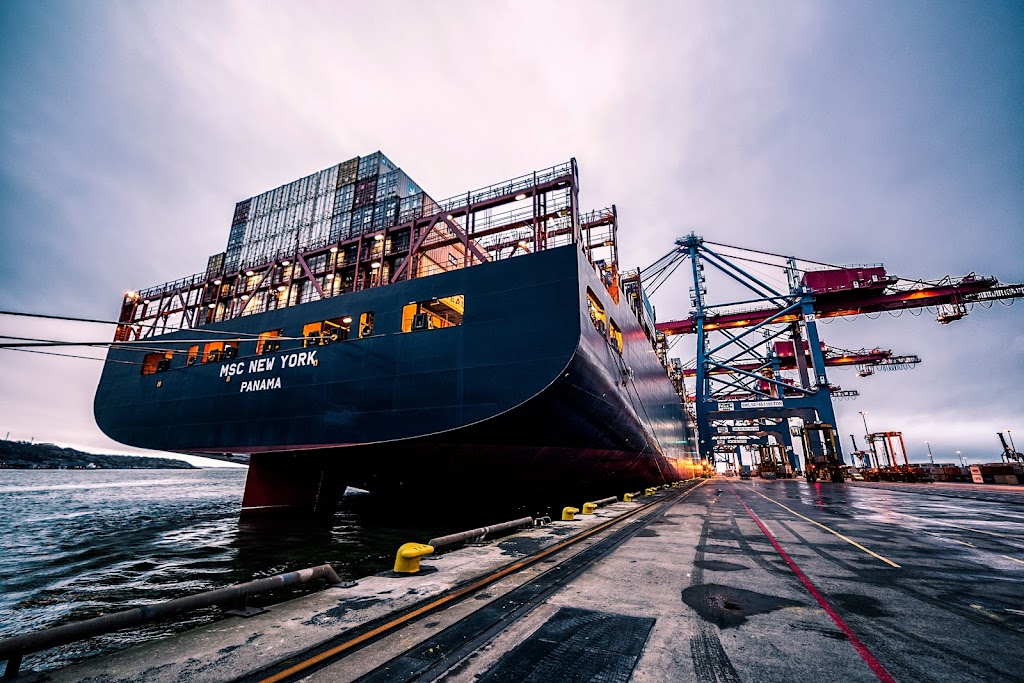The COVID-19 pandemic exposed vulnerabilities in global supply chains, highlighting the need for resilience and adaptability. As businesses navigate the post-pandemic world, building resilient supply chains is paramount. This guide looks into strategies that can help companies strengthen their supply chain resilience in the face of future disruptions.
Understanding Supply Chain Resilience
1. The Importance of Supply Chain Resilience
Defining Supply Chain Resilience and Its Role in Business Continuity
Supply chain resilience is the capacity of a supply chain to withstand and recover from disruptions. It involves designing supply chains to be flexible, adaptable, and robust in the face of unexpected events, such as natural disasters, economic crises, or pandemics. Supply chain resilience is vital for business continuity because it ensures that essential products and services continue to flow, even in challenging circumstances. Resilient supply chains minimize disruptions, reduce financial losses, and maintain customer trust.
The Lessons Learned from the Pandemic
The COVID-19 pandemic has highlight the critical importance of supply chain resilience. Many organizations faced new challenges as global supply chains were disrupted. Lessons learned include the need for diversified sourcing, strategic stockpiling of critical materials, and improved risk assessment and monitoring. Businesses are now re-evaluating their supply chain strategies, investing in digital technologies for real-time visibility, and fostering closer collaboration with suppliers. The pandemic serves as a stark reminder that supply chain resilience is not merely a competitive advantage; it’s a fundamental requirement for the survival and success of businesses in an increasingly volatile world.
2. Common Supply Chain Disruptions
Exploring Potential Disruptions Beyond Pandemics
While pandemics have recently taken center stage as a significant supply chain disruption, it’s essential to recognize that supply chains are vulnerable to various other disruptions as well. These disruptions can arise from factors such as sudden shifts in consumer demand, economic recessions, or geopolitical conflicts. Fluctuations in market conditions, regulatory changes, and supplier disruptions can also impact supply chains significantly. Understanding that supply chain disruptions can originate from diverse sources is vital for effective risk mitigation and resilience planning.
Natural Disasters, Geopolitical Issues, and Cyber Threats
Supply chains face an array of potential disruptions, including natural disasters like earthquakes, hurricanes, and floods. These events can disrupt transportation routes, damage infrastructure, and disrupt the flow of goods. Geopolitical issues, such as trade tensions and conflicts, can lead to trade restrictions, tariffs, and supply chain reconfigurations. Additionally, cyber threats, including data breaches and ransomware attacks, pose risks to supply chain integrity by compromising data security and disrupting digital operations. Preparing for and mitigating these diverse disruptions is crucial for maintaining supply chain resilience and ensuring business continuity in an increasingly complex and interconnected global economy.
Strategies for Building Resilience
3. Diversifying Suppliers and Sourcing
Reducing Dependency on a Single Supplier or Region
Reducing dependency on a single supplier or region is a fundamental strategy to enhance supply chain resilience. Relying solely on one source for critical materials or components leaves a supply chain vulnerable to disruptions. For example, geopolitical tensions or natural disasters in that region can lead to shortages and production delays. To mitigate this risk, businesses should identify alternative suppliers in different geographic areas. This diversification not only safeguards against disruptions but also encourages healthy competition, potentially leading to cost savings and improved quality.
Strategies for Diversifying Sourcing
Diversifying sourcing involves a thoughtful approach to identify and integrate alternative suppliers into the supply chain. Key strategies include conducting thorough supplier assessments, establishing clear communication channels, and maintaining redundancy in critical supply sources. Businesses should also invest in supplier relationship management to build strong partnerships with multiple suppliers. Additionally, implementing supply chain technologies for real-time visibility can aid in tracking and managing diversified sources effectively. Diversifying sourcing not only strengthen supply chain resilience but also fosters adaptability, ensuring that disruptions are less likely to cripple operations.
4. Inventory Management and Buffer Stock
The Role of Buffer Stock in Mitigating Shortages
Buffer stock, often referred to as safety stock, plays a crucial role in mitigating shortages within supply chains. It involves maintaining an additional inventory of products or materials beyond what is typically needed for regular demand. This surplus inventory acts as a cushion against unexpected disruptions, such as supplier delays or spikes in demand. When disruptions occur, businesses can draw from the buffer stock to continue operations smoothly, preventing shortages that can lead to customer dissatisfaction and lost revenue. However, managing the right level of buffer stock is a delicate balance, as excessive buffer stock can tie up capital and storage space.
Balancing Inventory Costs with Supply Security
Balancing inventory costs with supply security is a complex challenge in inventory management. Maintaining high levels of buffer stock for supply security incurs carrying costs, including storage, insurance, and capital tied up in inventory. Striking the right balance involves considering factors like demand variability, lead times, and the cost of potential shortages. Advanced forecasting techniques and inventory optimization tools help businesses make informed decisions about the appropriate level of buffer stock. Achieving this balance ensures that supply chains are both resilient and cost-effective, safeguarding against disruptions while minimizing unnecessary inventory expenses.
5. Digital Transformation
Leveraging Technology for Real-Time Visibility and Data Analytics
Digital transformation is revolutionizing supply chain management by providing real-time visibility and advanced data analytics. Technology enables businesses to monitor their supply chains at every stage, from sourcing to delivery, offering insights into inventory levels, order status, and production schedules. This real-time visibility allows for proactive decision-making, reducing response times to disruptions and optimizing operations. Moreover, data analytics harnesses the power of big data, identifying trends, patterns, and opportunities that can inform strategic choices. By leveraging technology for real-time visibility and data analytics, organizations gain a competitive edge in a rapidly evolving marketplace, enhancing efficiency, and staying agile.
The Importance of Cloud-Based Supply Chain Solutions
Cloud-based supply chain solutions are instrumental in modernizing supply chain management. They offer scalability, accessibility, and flexibility, allowing businesses to adapt to changing demands and conditions swiftly. Cloud solutions facilitate collaboration among supply chain partners by providing a centralized platform for data sharing and communication. Furthermore, they enable real-time updates and secure data storage, enhancing supply chain transparency and reliability. As the supply chain landscape continues to evolve, cloud-based solutions are integral for driving digital transformation, improving overall efficiency, and ensuring that supply chains remain resilient and responsive to the demands of the digital age.
6. Supplier Relationships and Collaboration
Strengthening Partnerships with Suppliers
Supplier relationships are at the core of effective supply chain management. Strengthening these partnerships involves nurturing trust, transparency, and mutual understanding. This can be achieved by open communication, sharing information about demand forecasts, and setting clear expectations. Collaborative efforts to improve efficiency, reduce costs, and enhance product quality benefit both parties. Developing long-term relationships with suppliers fosters reliability and loyalty, reducing the risk of disruptions. Strong partnerships can also lead to joint innovation and product development, creating a competitive advantage in the market.
Collaborative Planning and Risk-Sharing
Collaborative planning and risk-sharing are essential elements of successful supplier relationships. By engaging in joint planning and decision-making, businesses and suppliers can align their goals and strategies. This includes sharing demand forecasts, production schedules, and inventory data. In times of disruption or unexpected events, a collaborative approach allows for risk mitigation and rapid response. Risk-sharing agreements can include strategies for sharing the burden of unexpected costs or delays, ensuring that both parties are invested in finding solutions to challenges. Through collaboration, supplier relationships become resilient and adaptable, capable of navigating the complexities of the modern supply chain landscape.
7. Risk Assessment and Scenario Planning
Identifying Supply Chain Vulnerabilities
Effective risk assessment in supply chain management begins with identifying vulnerabilities. This involves a comprehensive evaluation of the supply chain, including suppliers, transportation, and inventory management. Identifying vulnerabilities helps highlight potential weak links in the chain that could lead to disruptions. These vulnerabilities can range from single-source suppliers to long lead times or inadequate data visibility. Once identified, businesses can proactively implement strategies to mitigate these vulnerabilities, enhancing supply chain resilience.
Scenario Planning for Different Disruption Scenarios
Scenario planning is a proactive strategy to prepare for different disruption scenarios. It involves creating hypothetical situations, such as natural disasters, geopolitical conflicts, or sudden changes in demand, and developing response plans for each scenario. Scenario planning helps supply chain managers anticipate challenges, assess potential impacts, and implement strategies to minimize disruption. By considering various scenarios, businesses can make informed decisions, allocate resources effectively, and ensure continuity even in the face of unforeseen events. This strategic approach enhances supply chain resilience and helps organizations navigate uncertainty with greater confidence.
8. Resilient Transportation and Logistics
Creating Flexible Transportation Networks
Resilient transportation and logistics are built on the foundation of flexible transportation networks. These networks are designed to adapt swiftly to changing circumstances, such as disruptions in supply routes or unexpected surges in demand. Flexibility involves having backup plans, redundant transportation options, and agile logistics partners. It also includes leveraging technology for real-time tracking and rerouting of shipments, allowing for on-the-fly adjustments. By creating transportation networks that can pivot when needed, businesses can ensure that goods continue to flow, minimizing delays and maintaining customer satisfaction even in challenging situations.
The Role of Alternative Routes and Modes of Transportation
Alternative routes and modes of transportation are essential components of resilient logistics. When a primary route or mode is disrupted, having alternative options in place can prevent significant disruptions. This may involve having secondary transportation providers, using different shipping methods (e.g., air, rail, sea), or having alternative delivery destinations. Diversifying transportation options not only mitigates risks but also provides cost-efficiency and flexibility advantages. By incorporating alternative routes and transportation modes into logistics planning, businesses can enhance supply chain resilience and minimize the impact of unexpected disruptions.
9. Sustainability and Eco-Resilience
Aligning Supply Chain Resilience with Sustainability Goals
Creating eco-resilience within supply chains involves aligning resilience strategies with sustainability goals. This means considering environmental impacts in supply chain decisions, such as choosing eco-friendly materials, optimizing transportation routes for reduced emissions, and minimizing waste. By integrating sustainability into resilience planning, organizations not only ensure their ability to withstand disruptions but also contribute to a more sustainable and environmentally responsible supply chain ecosystem.
Sustainable Sourcing and Ethical Considerations
Sustainable sourcing practices encompass ethical considerations that prioritize environmentally responsible and socially conscious supply chain operations. This involves selecting suppliers who adhere to sustainable practices, ethical labor standards, and fair trade principles. It also encompasses reducing the carbon footprint by sourcing locally and minimizing waste through responsible procurement. Sustainable sourcing aligns with broader sustainability goals and demonstrates a commitment to eco-responsibility and ethical business practices throughout the supply chain.
Case Studies in Supply Chain Resilience
10. Real-World Examples
5 Case Studies of Businesses That Successfully Adapted to Disruptions
- Apple Inc.: During the COVID-19 pandemic, Apple adapted rapidly by shifting its focus towards e-commerce and remote customer support. The company also diversified its supplier base to minimize risks from supply chain disruptions.
- Amazon: Amazon’s investment in advanced robotics and automation helped it meet increased demand during the pandemic. The company also developed its logistics network, allowing for rapid deliveries even during supply chain challenges.
- Toyota: Toyota’s just-in-time manufacturing approach faced disruptions due to the 2011 earthquake in Japan. However, the company’s robust risk management practices and supplier relationships enabled a quick recovery and minimized production downtime.
- Walmart: Walmart invested heavily in data analytics and AI to optimize inventory and improve supply chain visibility. These technologies helped them respond swiftly to shifting consumer demands during the pandemic.
- Unilever: Unilever’s sustainable sourcing practices and commitment to ethical supply chains have positioned it well to handle disruptions. Their focus on transparency and resilience-building has contributed to their long-term success.
Strategies Employed and Lessons Learned
These case studies highlight several key strategies for adapting to disruptions. Businesses must prioritize diversification of suppliers, invest in technology and data analytics, maintain strong supplier relationships, and embrace sustainability. Lessons learned include the importance of agility, risk management, and the need for continuous adaptation in an ever-changing business landscape. By implementing these strategies and learning from past experiences, businesses can navigate disruptions effectively and build greater resilience for the future.
Measuring and Monitoring Resilience
11. KPIs for Supply Chain Resilience
Key Performance Indicators to Assess Resilience
Measuring supply chain resilience requires the use of specific key performance indicators (KPIs) to evaluate performance. Some essential KPIs include:
- Time to Recovery (TTR): This measures how quickly the supply chain can bounce back after a disruption, highlighting its ability to recover efficiently.
- Supply Chain Risk Index: An index that assesses the overall risk exposure of the supply chain, considering factors like supplier risk, demand variability, and geopolitical issues.
- Inventory Turns: Calculating how often inventory is sold and replenished can indicate how well the supply chain balances stock levels with demand.
- Supplier Performance Metrics: Evaluating supplier performance in terms of on-time deliveries, quality, and responsiveness.
- Customer Satisfaction: Monitoring customer feedback and satisfaction levels to ensure disruptions do not negatively impact customer relationships.
The Importance of Continuous Monitoring
Continuous monitoring of these KPIs is vital to ensure ongoing resilience. Supply chains are dynamic, and risks evolve over time. Regularly tracking and analyzing performance metrics allows organizations to identify vulnerabilities, adapt strategies, and proactively address emerging challenges. Continuous monitoring ensures that supply chain resilience remains a priority and that adjustments are made as needed to maintain a robust and adaptable supply chain.
Challenges and Future Outlook
12. Challenges in Building Resilience
Identifying and Addressing Barriers to Resilience
Building supply chain resilience involves identifying and addressing various barriers and challenges. One significant barrier is the lack of awareness and understanding of resilience strategies within organizations. Overcoming this hurdle requires comprehensive education and training programs. Additionally, supply chains can be complex and interconnected, making it challenging to identify vulnerabilities and dependencies accurately. Implementing robust risk assessment practices and developing contingency plans are crucial steps in addressing these challenges. Furthermore, organizations may encounter resistance to change from stakeholders who are resistant to adopting new resilience strategies. Effective communication and change management are essential to overcome this barrier and ensure buy-in at all levels.
Balancing Costs and Investments
Balancing the costs of building resilience with the necessary investments is a critical challenge. While investing in redundancy, diversification, and technology can enhance resilience, it can also strain budgets and impact profitability. Striking the right balance involves conducting cost-benefit analyses to justify investments and identifying areas where cost-effective resilience measures can be implemented. Organizations must also consider the long-term benefits of resilience, such as reduced disruption-related costs and improved customer satisfaction. Balancing costs and investments requires a strategic approach that aligns resilience efforts with overall business goals and risk tolerance.
13. The Future of Resilient Supply Chains
Emerging Trends in Supply Chain Resilience
The future of resilient supply chains is marked by emerging trends that emphasize adaptability and agility. One trend is the increasing use of predictive analytics and artificial intelligence (AI) to anticipate disruptions and proactively address them. Additionally, supply chains are becoming more data-driven, leveraging real-time data from the Internet of Things (IoT) to optimize operations and respond swiftly to changes in demand or supply. Sustainable and ethical sourcing practices are gaining prominence, reflecting a growing commitment to responsible business operations. Moreover, businesses are embracing circular supply chain models that reduce waste and improve sustainability. These emerging trends signify a shift towards more resilient and responsible supply chains capable of navigating an evolving global landscape.
The Role of AI, IoT, and Blockchain
AI, IoT, and blockchain technologies will play a pivotal role in shaping resilient supply chains. AI enhances predictive capabilities, enabling supply chains to forecast disruptions accurately and optimize logistics. IoT sensors provide real-time data on the condition and location of goods, enhancing visibility and enabling rapid response to issues. Blockchain ensures transparency and trust in supply chain transactions, reducing the risk of fraud and enhancing traceability. These technologies will enable supply chains to become more agile, responsive, and resilient, ultimately ensuring that disruptions are minimized, and business operations remain stable in an increasingly volatile world.
Conclusion: A Resilient Path Forward
Building resilient supply chains is not merely a response to disruptions but a strategic imperative in today’s dynamic business landscape. By aligning supply chain resilience with sustainability, embracing emerging technologies, and continuously monitoring performance, organizations can navigate uncertainties effectively. The path forward involves proactive risk mitigation, robust partnerships, and a commitment to responsible and agile supply chain practices. Resilience is the key to not only surviving disruptions but thriving in an ever-evolving global marketplace.









